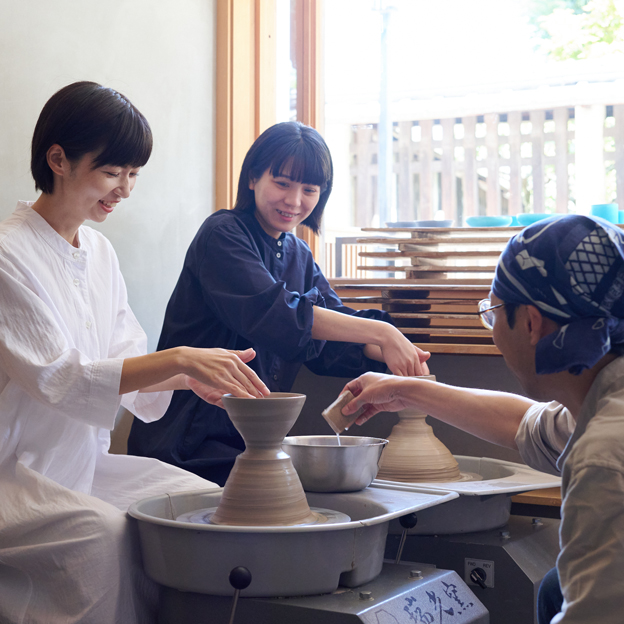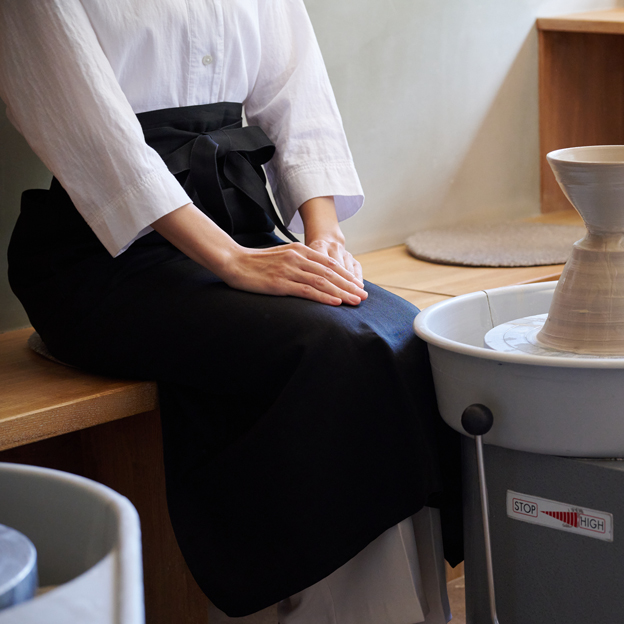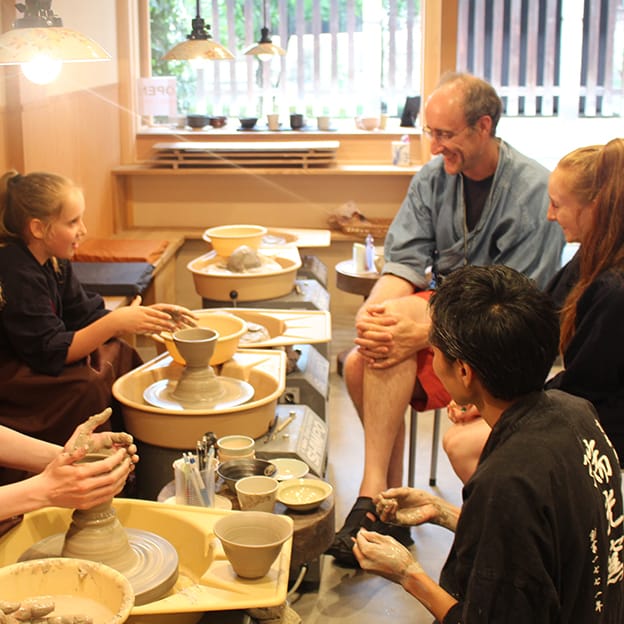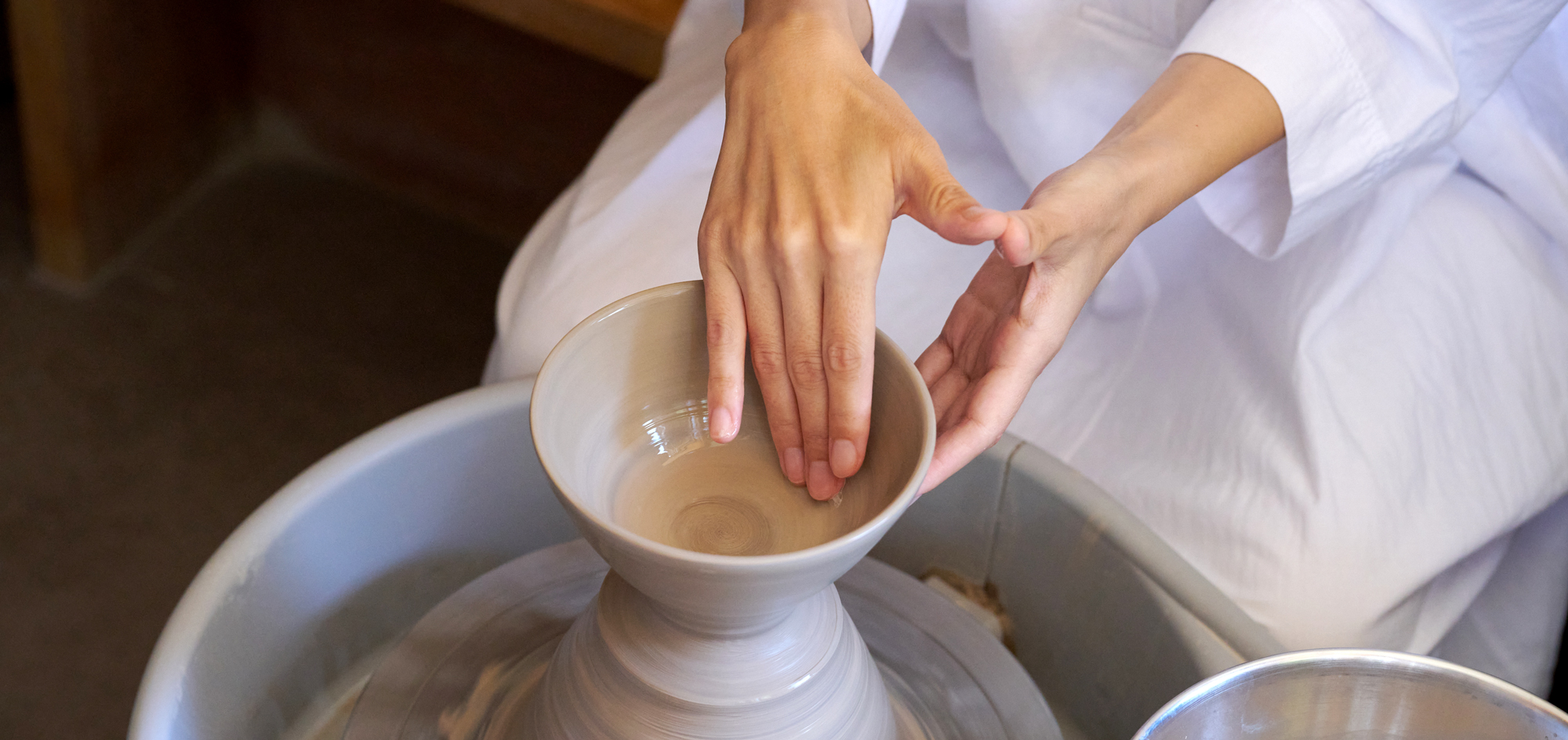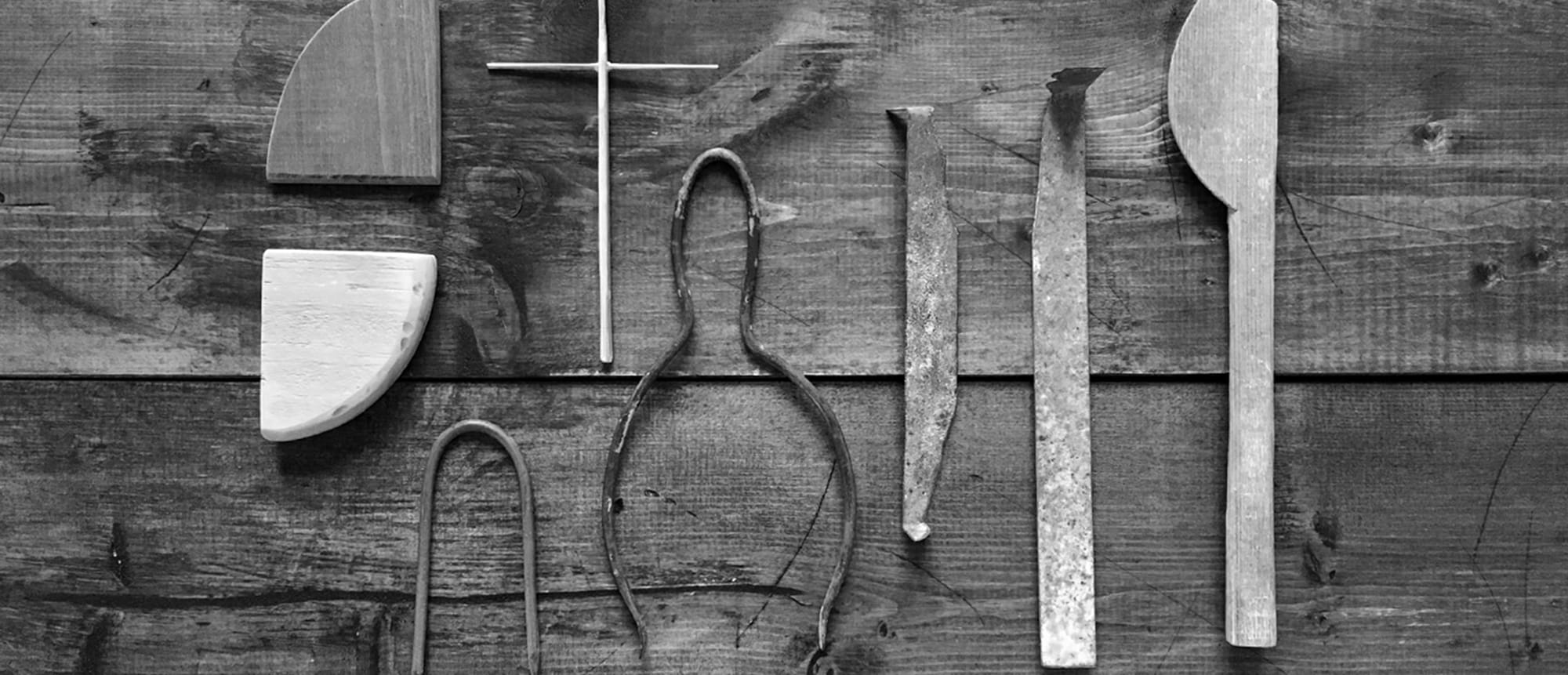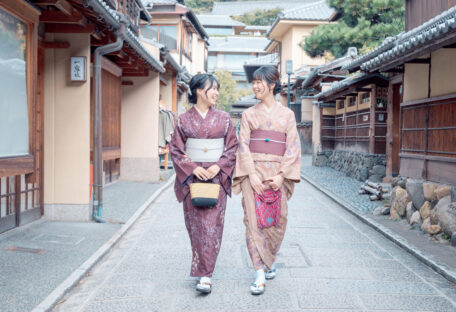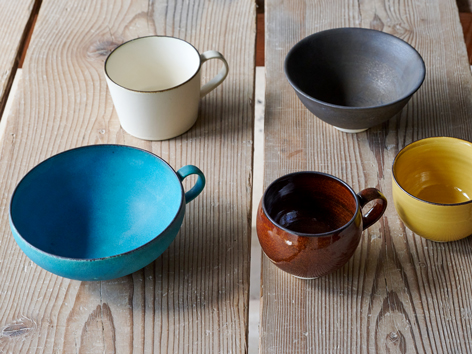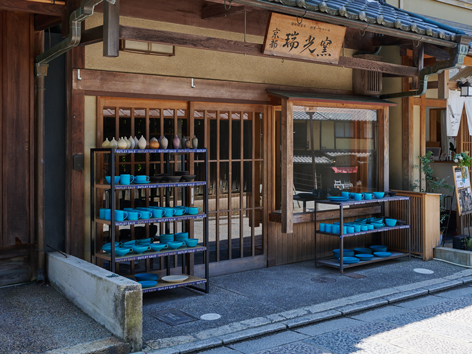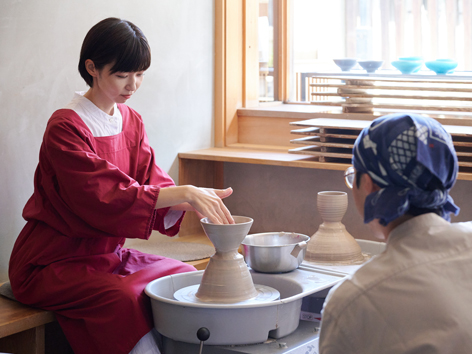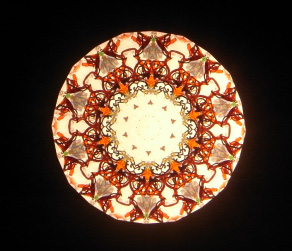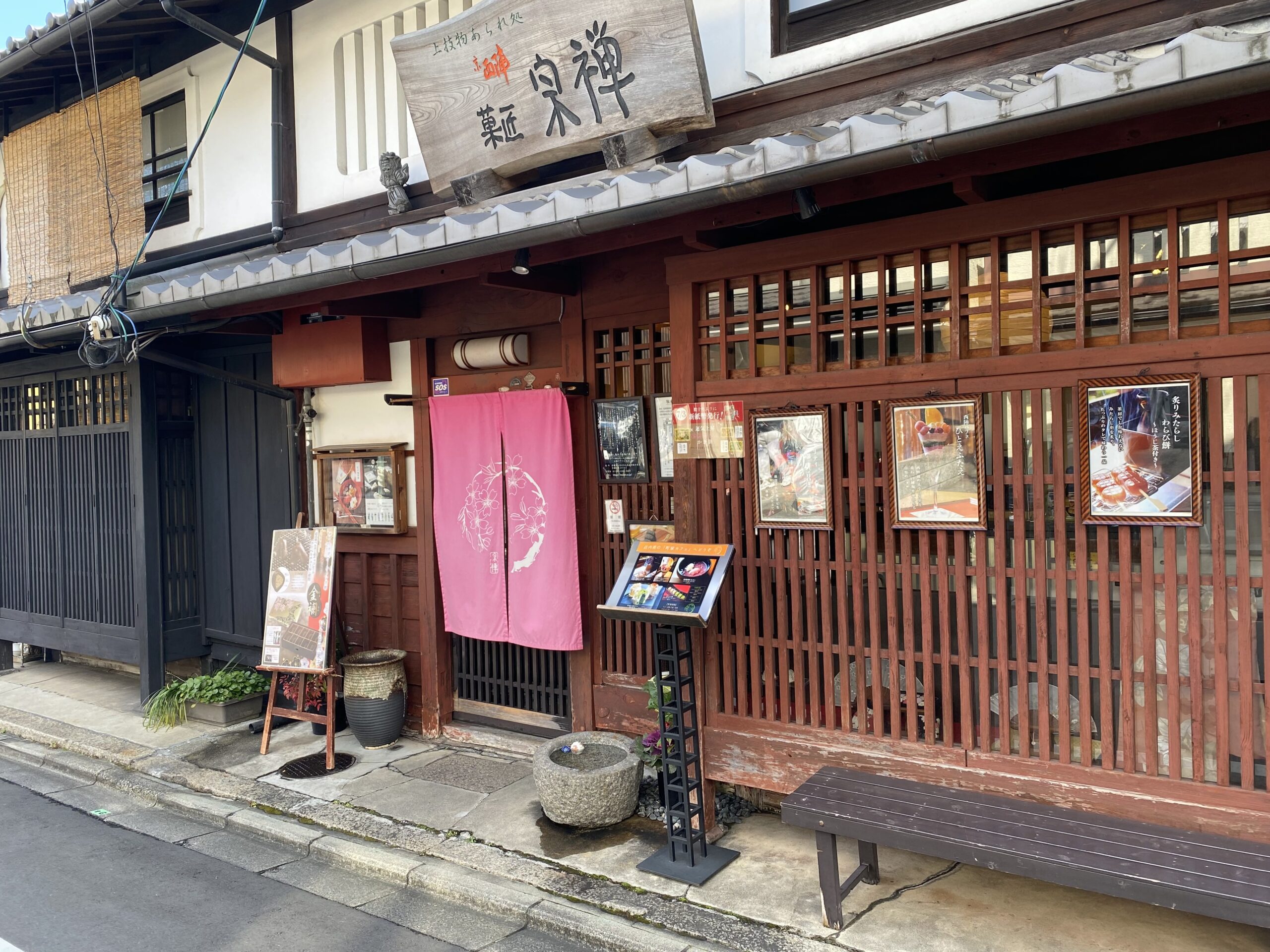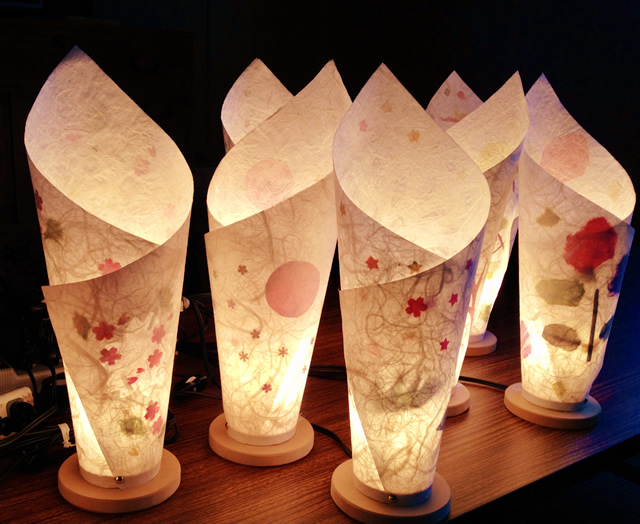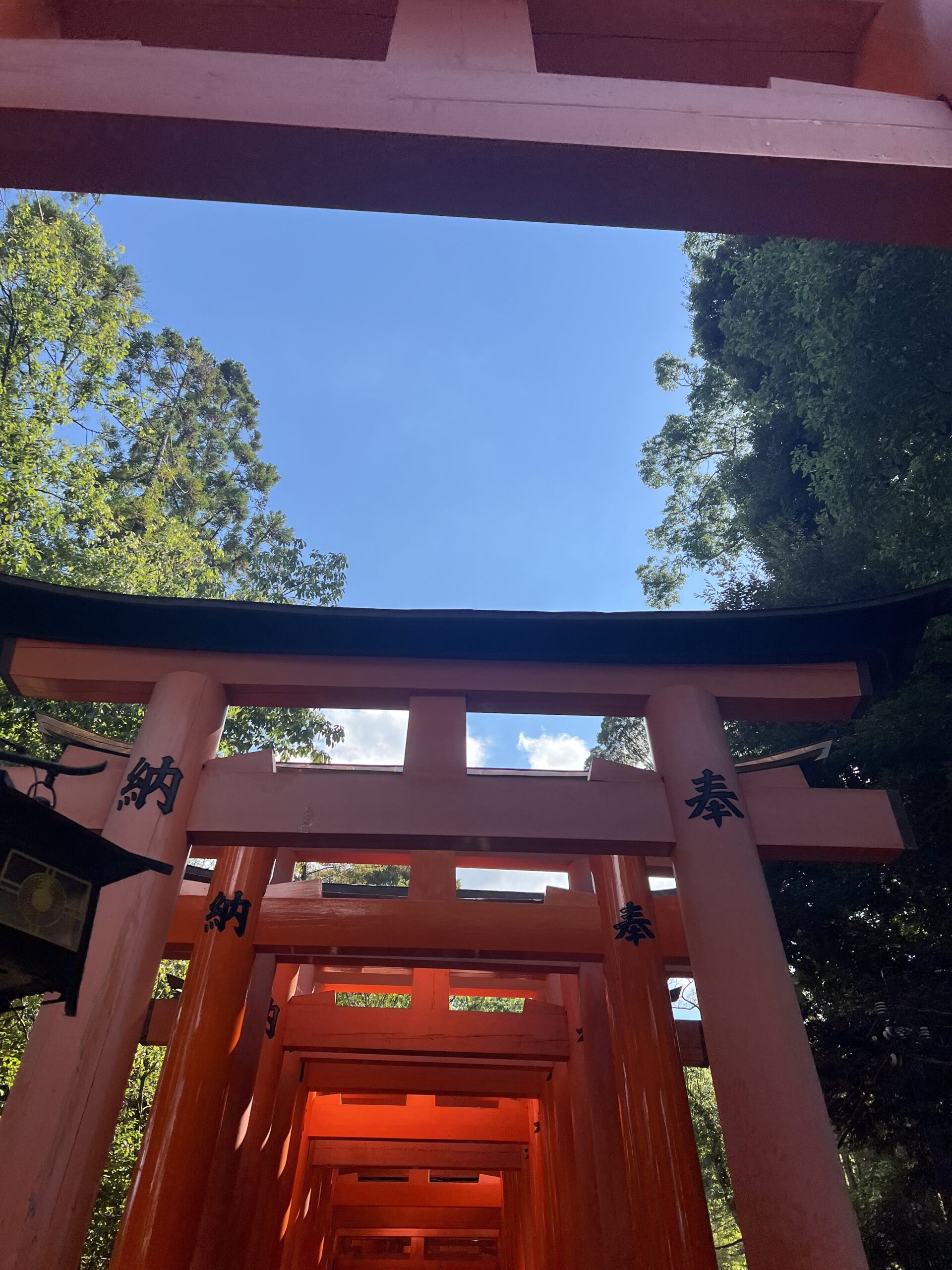

Zuikogama Kiyomizu :Kyoto
For pottery and wheel-throwing experiences in Kyoto, head to Zuikogama, the most popular kiln.
Make a memorable memory of your trip to Kyoto by experiencing pottery at a Kyo-yaki and Kiyomizu-yaki kiln. A craftsman will gently teach you the traditional techniques that have been passed down for about 150 years. We also accept groups such as school trips and company trips. Enjoy a full-fledged pottery experience in the heart of Kiyomizu, Kyoto.
The History of Zuikogama
The Beginnings of Kyo-yaki and Kiyomizu-yaki
Kyo-yaki is a general term for pottery made in various parts of Kyoto City. Among them, the pottery made in kilns mainly on Gojozaka is called Kiyomizu-yaki.
There are various theories about the origin of Kyo-yaki, but its history is long, and one theory is that pottery has been produced since the Kofun period. In addition, Chawanzaka, which leads to Kiyomizu-dera Temple, was named after the monk Gyoki, who built a kiln at Seikan-ji (Seikan-ji, Higashiyama Ward) during the Nara period. This street is also said to be the birthplace of Kyoto ware and Kiyomizu ware, and it speaks to the long history of Kyoto ware.
During the Muromachi period, overglaze pottery was introduced from the Ming dynasty, a Chinese dynasty, and overglaze pottery was born. Furthermore, during the Edo period, many pieces of overglaze pottery were produced against the backdrop of the popularity of the tea ceremony. It was during the Edo period that Nonomura Ninsei, who is said to have perfected Kyoto ware and Kiyomizu ware, appeared. Ninsei completed extremely beautiful tea utensils using the secret technique of nishikide, and had a major impact on the history of Kiyomizu ware. After that, Kiyomizu ware produced many master craftsmen, such as Ogata Kenzan, who was taught by Ninsei and established the unique stylized beauty of Kyoto ware with his own unique designs. Their name spread throughout the country.
Opening of Zuikogama
The first Shimizu Rokubei was born in 1738 in the middle of the Edo period to a farming family in Osaka. In his teens, he learned pottery from Ebiya Seibei of Gojozaka, Kyoto, and opened the Rokubei Kiln in 1771. This marked the beginning of the history of Zuikogama.
In 1818, the eldest son of the second Shimizu Rokubei took the name Shimizu Shichibei and established a branch family. Then, in 1867, the second son of the second Shimizu Shichibei was adopted and took the name Tsuchitani Zuiko. This was the birth of the Tsuchitani Zuiko Kiln.
The second Tsuchitani Zuiko (Kikujiro) moved his workshop from Gojozaka to Imakumano in 1928 and built a climbing kiln. At the time, only those who owned a kiln could call themselves “potters”. With the opening of the climbing kiln, Tsuchitani’s Zuikogama became a “potters” as it was originally intended. This was the fulfillment of the dream of the first Tsuchitani Zuiko.
The evolving workshop
The third Tsuchitani Zuiko (Minoru) saw a major turning point for the kiln to adapt to the times. This was because the Air Pollution Prevention Act, which came into force in 1969, made the soot from climbing kilns a problem.
In response to this problem, the third Tsuchitani Zuiko (Minoru) demolished the climbing kiln and workshop and searched for a new type of workshop. This led to the appearance of a revolutionary kiln with universal functions in the Imakumano workshop. This type of kiln has continued to be used to this day.
As kiln styles changed from climbing kilns to electric furnaces and then to gas furnaces, Zuiko Kiln was the first in Kyoto to introduce gas furnaces. The unconventional reforms of the workshop subsequently spread to potters throughout Kyoto.
Passing on tradition to the future
In the past, Kyo-yaki and Kiyomizu-yaki were very expensive and only available to the wealthy, as they were sold at high-end restaurants. However, in today’s world, where the inheritance of traditional crafts is in jeopardy, we believe it is important to convey the excitement of using Kiyomizu-yaki pottery to as many people as possible.
With that in mind, we opened a pottery class in 1996. To date, we have produced approximately 300 students. In addition, more than 10,000 domestic and international customers experience the charm of pottery every year at the pottery experience in our studio. Kyoto boasts a wonderful history and tradition. Temples and shrines, traditional crafts, Kyoto cuisine, and Kyoto dialect. We hope to convey the charm of Kyoto, as well as Kyo-yaki and Kiyomizu-yaki.
By experiencing Kiyomizu-yaki more closely, we hope to continue passing on the tradition to future generations. We will continue to pass on what we have inherited to the next generation. We believe that beyond that, there is value in being called the real thing. We hope to continue to bring smiles and excitement to many people through our pottery experiences, and to continue to create beautiful pottery that blends into people’s lives. Zuikogama hopes to remain a pottery studio that is open to all.
Electric potter’s wheel course Light plan
It can be easily challenged in a short time, so it is also recommended for those who want to take their time sightseeing in Kyoto. Experienced works are carefully finished by skilled craftsmen in a large kiln firing unique to a long-established pottery manufacturer.
Participation fee:From 2,900 yen (tax included)
Time required:About 20 minutes (15 minutes for experience + 5 minutes for color selection, address entry, etc.)
Store:Kyoto Kiyomizu store
Plan content:You can do this much in 20 minutes! Make your own cute cup only at Zuikogama♪
Options:Mug handle + 700 yen Bronze rim (edge iron) + 700 yen
Notes
*For details on the fees, please refer to the calendar on the reservation screen. *Separate shipping fee payment is required on the day (see the bottom of this page) *You can choose from three colors: white, lemon, and candy. *Items you can make: Cups (up to 8 cm in diameter x 7 cm in height)
Electric potter’s wheel course Standard plan
You can choose the shape of the vessel. You can experience full-scale potter’s wheel turning while consulting with the craftsman about your wishes. This is a popular plan only available at Zuikougama, where you can create your own special piece of work.
Participation fee:From 3,900 yen (tax included)
Time required:About 25 minutes (20 minutes for experience + 5 minutes for choosing colors and writing your address)
Stores:Kyoto Kiyomizu store, Higashiyama Kobo store
Plan details:The most popular plan where you can create any shape you like ☆ You can freely create vessels in any shape you like.
Options:Mug handle + 700 yen
Bronze rim (edge iron) + 700 yen
Notes
※For details on fees, please refer to the calendar on the reservation screen.
※A separate shipping fee must be paid on the day (see the bottom of this page)
※Available sizes: up to 15 cm in diameter x 15 cm in height
※You can choose from five colors: white, lemon, candy, turquoise, and bronze.
※Turquoise glaze and bronze glaze tend to absorb the smell of coffee and tea. We recommend using these two colors for making things other than mugs.
Electric Wheel Course: Pottery & Kimono Rental Plan
After experiencing traditional pottery with a history of 250 years, walk around Kyoto’s tourist spots in a kimono. This is a luxurious plan recommended for creating memories of your trip to Kyoto. You can enjoy various tourist attractions, including Kiyomizu-dera Temple, Kyoto’s No. 1 tourist spot.
Participation fee:7,900 yen (tax included) and up
Time required:About 25 minutes (20 minutes for experience + 5 minutes for color selection and address entry)
Store:Kyoto Kiyomizu store
Color of work:You can choose from 5 colors: white, lemon, candy, turquoise, and bronze.
Plan contents:”Zuikogama potter’s wheel experience standard plan 3,900 yen” + “Yume Kyoto kimono rental full set coordination plan 5,390 yen”
Kimono rental:Kimono rental is available at Yume Kyoto Kodaiji store. In June, July, and August, you can choose between a kimono and a yukata. Please return the kimono to the [Yume Kyoto Kodaiji store] by 17:30 on the day.
Schedule
1. First, come to [Zuikogama Kyoto Kiyomizu store].
2. You will be given a ticket for kimono rental and pottery experience.
3. You can enjoy kimono rental and experience by exchanging the ticket at each store.
